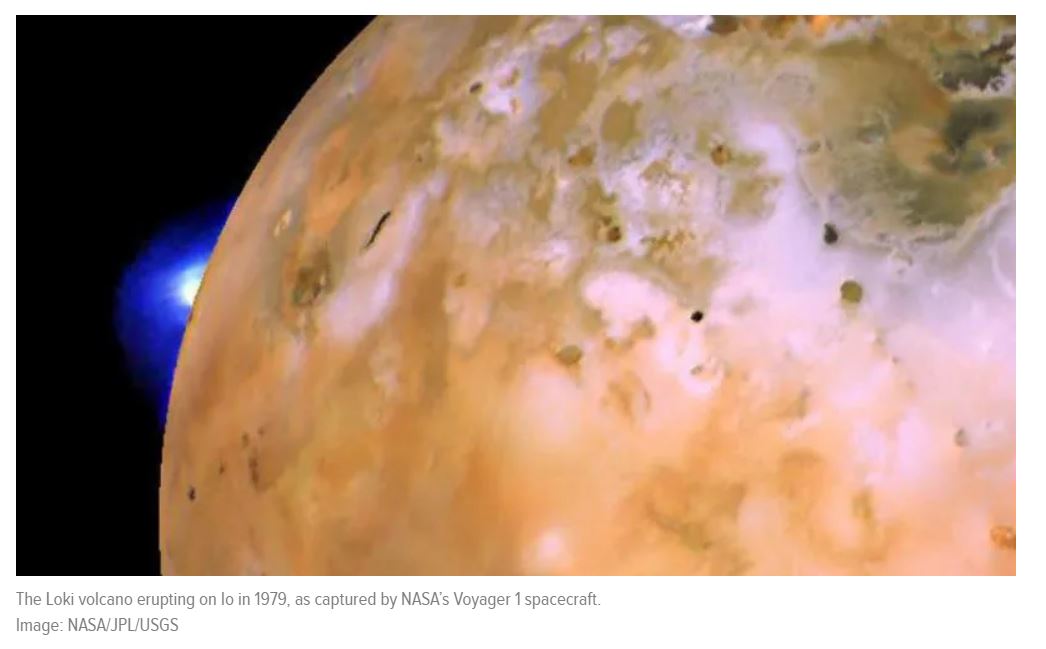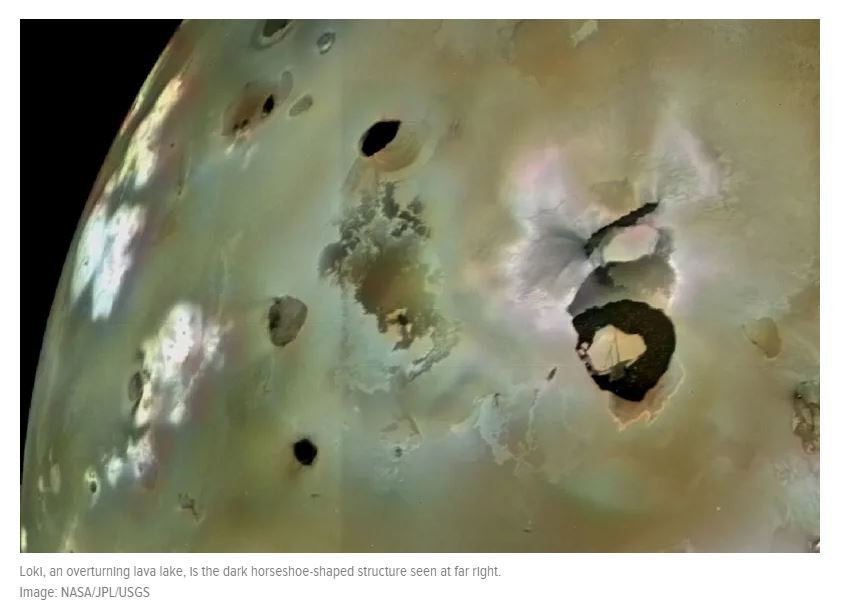September 18, 2019
The Biggest Volcano on Jupiter’s Molten Moon Io Is Likely to Erupt at Any Moment. Observational data collected over the years suggests the largest volcano on Jupiter’s moon Io—the most geologically active object in the Solar System—will erupt in mid-September, which is pretty much any moment now.
 When it comes to eruptions, volcanoes tend to operate on their own unpredictable schedules. Such is not the case for Loki, however, the largest volcano on Io. When this thing blows, which it tends to do on the regular, it accounts for 15 percent of the moon’s total heat expenditure. So powerful is this 200-kilometer-wide (124-mile) volcano that astronomers can observe its tantrums using ground-based telescopes, making it the most thoroughly studied volcano not on Earth.
When it comes to eruptions, volcanoes tend to operate on their own unpredictable schedules. Such is not the case for Loki, however, the largest volcano on Io. When this thing blows, which it tends to do on the regular, it accounts for 15 percent of the moon’s total heat expenditure. So powerful is this 200-kilometer-wide (124-mile) volcano that astronomers can observe its tantrums using ground-based telescopes, making it the most thoroughly studied volcano not on Earth.
For the past 20 years, astronomer Julie Rathbun from the Planetary Science Institute in Arizona has watched in astonishment as this volcano erupts with eerie regularity. Her latest calculations suggest Loki will erupt in mid-September, as she told an audience today at the EPSC-DPS Joint Meeting 2019 in Geneva, Switzerland, according to a press release put out by the Europlanet Society. Prior to this, Rathbun correctly predicted that Loki would erupt in May 2018.
 Indeed, Rathbun knows this volcano rather well. In 2002 she identified Loki as a periodic volcano. By analyzing data collected from 1988 to 2000, she saw that the horseshoe-shaped giant erupted at roughly 540-day intervals. But then the moon, true to the trickster god for which it is named, went off schedule during the 2000s, erupting less frequently and with no discernible pattern. That changed starting in 2013, when Rathbun identified a new schedule in which Loki erupted at roughly 475-day intervals, with eruptions lasting for around 160 days.
Indeed, Rathbun knows this volcano rather well. In 2002 she identified Loki as a periodic volcano. By analyzing data collected from 1988 to 2000, she saw that the horseshoe-shaped giant erupted at roughly 540-day intervals. But then the moon, true to the trickster god for which it is named, went off schedule during the 2000s, erupting less frequently and with no discernible pattern. That changed starting in 2013, when Rathbun identified a new schedule in which Loki erupted at roughly 475-day intervals, with eruptions lasting for around 160 days.
Loki, which Rathbun suspects is a large overturning lava lake (and sadly not an overturning lava cake), is predictable owing to its tremendous girth.
“Because of its size, basic physics are likely to dominate when it erupts, so the small complications that affect smaller volcanoes are likely to not affect Loki as much,” Rathbun was quoted as saying in the Europlanet Society release.
In a short paper put together for the EPSC-DPS meeting, Rathbun said Loki “is a lava lake with a crust that solidifies as it cools,” and the “amount of time between eruptions is the amount of time necessary for the crust to become gravitationally unstable and is, therefore, related to the porosity of the lava.”
But because Loki has a prior history of changing its schedule on a dime, Rathbun warned that her latest prediction is not ironclad.
“Volcanoes are so difficult to predict because they are so complicated,” she said. “Many things influence volcanic eruptions, including the rate of magma supply, the composition of the magma—particularly the presence of bubbles in the magma, the type of rock the volcano sits in, the fracture state of the rock, and many other issues.”
So, a super neat prediction for a super cool moon. Hopefully we’ll have something to report on in the coming days.